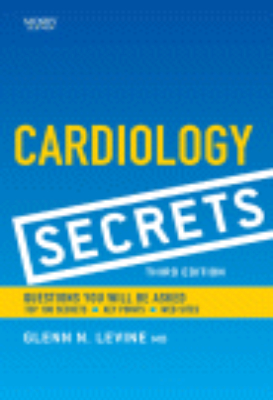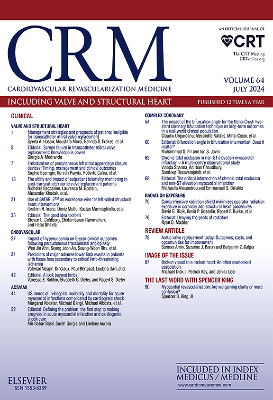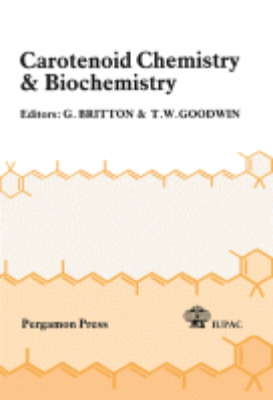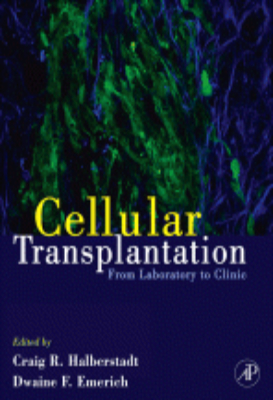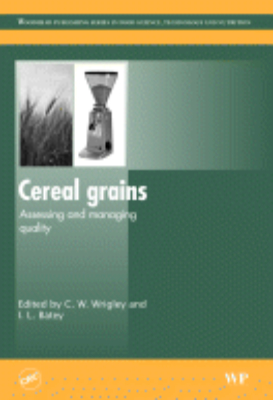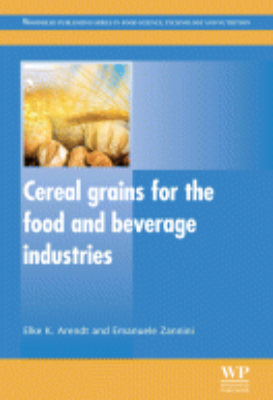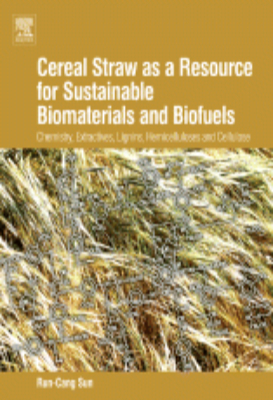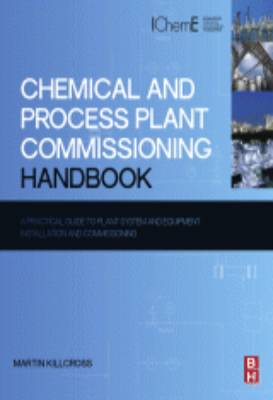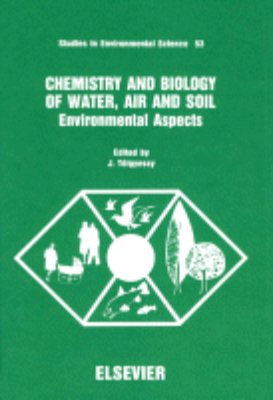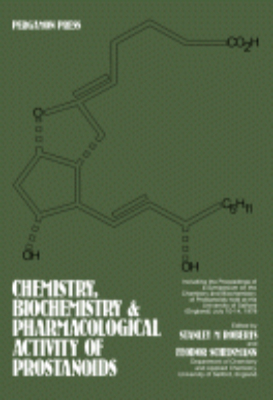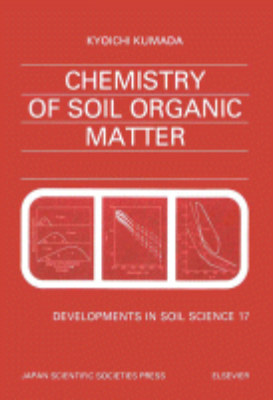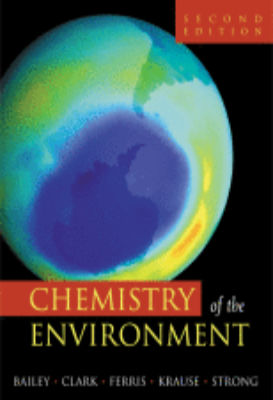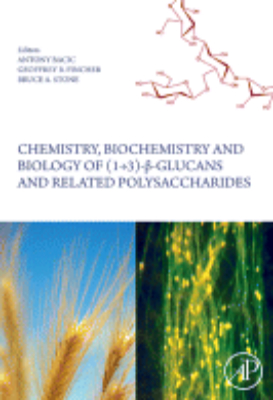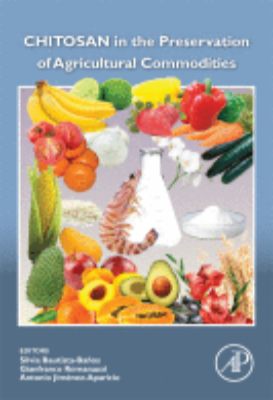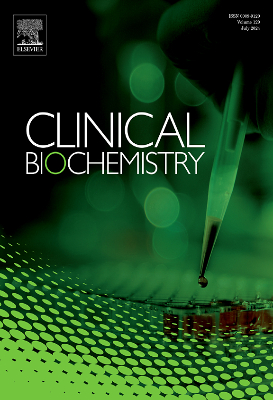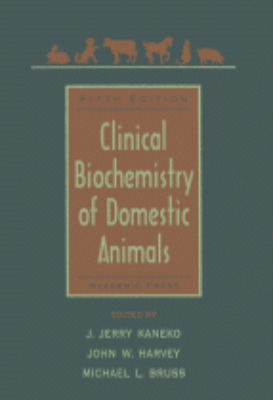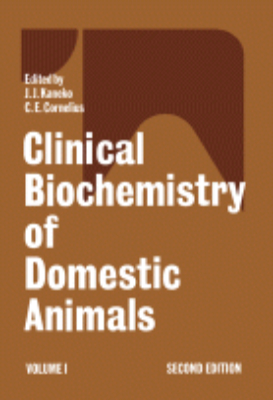E-Resources
Cardiology of the Horse
Cardiology of the Horse is a multi-author, contemporary reference on equine cardiology. The first section reviews the physiology, pathophysiology and pharmacology of the equine cardiovascular system. The second section describes diagnostic methods from basic to specialist examination skills and the third section addresses the investigation and management of common clinical problems using a problem-orientated approach. Suitable for students, general and specialist practitioners and teachers.
Cardiology Secrets
"Revised and updated, Cardiology Secrets, 3rd Edition has the answers. Comprehensive, yet easy to read, Dr. Levine presents all the latest advances in the diagnosis and treatment of heart conditions in this popular Secret Series volume. A two-color page layout, portable size, and a list of the Top 100 Secrets in cardiology help you better meet the challenges you face today. Youll find all the features you rely on from the Secrets Seriesa question-and-answer format, lists, mnemonics, tables and an informal tonethat make reference fast and easy. Plus, new imaging modalities and pharmacologic agents keep you on the cusp of the latest advances. Key Features. Expedites reference and review with a question-and-answer format, bulleted lists, mnemonics, and practical tips from the authors.. Covers the full range of essential topics, including general examination, diagnostic procedures, arrhythmias, symptoms and disease states, valvular heart disease, cardiovascular pharmacology, and other medical conditions with associated cardiac involvement.. Features a two-color page layout, ""Key Points"" boxes, and lists of useful web sites to enhance your reference power.. Presents a chapter containing ""Top 100 Secrets"", providing you with an overview of essential material for last-minute study or self-assessment.. Fits comfortably in the pocket of your lab coat so you have it conveniently on hand at all times.. Presents a new editor and a new contributor team who bring you fresh perspectives and the latest research in cardiology.. Discusses the latest imaging modalities and pharmacologic agents to keep you up to date.. Uses a new contemporary internal design that helps you navigate the text easier."
Carotenoid Chemistry and Biochemistry
Carotenoid Chemistry and Biochemistry covers the proceedings of the Sixth International Symposium on Carotenoids, held in Liverpool, United Kingdome on July 26-31, 1981. This symposium highlights the interest in biochemical and biological aspects of carotenes. This book is organized into 25 chapters including chapters on carotenoid chemistry, their structures, synthesis and physical methods, with emphasis on their stereochemistry. Other chapters deal with the chemistry of complexes between carotenoids or retinoids and protein, the novel blue carotenoproteins, and the visual pigments and the nutritionally important retinol-binding proteins. The discussions then shift to animal carotenoids, carotenoid metabolism and transformations, including interesting stereochemical findings. This book also reviews studies of carotenoids in photosynthesis, the industrial importance of carotenoids, medical aspects, particularly the use of carotenoids in treatment against skin photosensitivity and their possible role in protection against cancer. The remaining chapters examine the effects of chemicals on carotenoid biosynthesis and its relevance to herbicide design. This book will be of value to carotenoid scientists and researchers.
Cellular Transplantation
"There have been tremendous strides in cellular transplantation in recent years, leading to accepted practice for the treatment of certain diseases, and use for many others in trial phases. The long history of cellular transplantation, or the transfer of cells from one organism or region of the body to another, has been revolutionized by advances in stem cell research, as well as developments in gene therapy. Cellular Transplants: From Lab to Clinic provides a thorough foundation of the basic science underpinning this exciting field, expert overviews of the state-of-the-art, and detailed description of clinical success stories to date, as well as insights into the road ahead. As highlighted by this timely and authoritative survey, scale-up technologies and whole organ transplantation are among the hurdles representing the next frontier. The contents are organized into four main sections, with the first covering basic biology, including transplant immunology, the use of immunosuppressive drugs, stem cell biology, and the development of donor animals for transplantation. The next part looks at peripheral and reconstructive applications, followed by a section devoted to transplantation for diseases of the central nervous system. The last part presents efforts to address the key challenges ahead, such as identifying novel transplantable cells and integrating biomaterials and nanotechnology with cell matrices. Key Features. Provides detailed description of clinical trials in cell transplantation. Review of current therapeutic approaches. Coverage of the broad range of diseases addressed by cell therapeutics. Discussion of stem cell biology and its role in transplantation"
Cereal Grains
"Cereal grains are essential to our dietary needs, as well as for animal feeding and for industrial processing. Consumer needs can only be met by managing quality at all stages of the grain chain. Quality evaluation is also needed at each step for effective management. Cereal grains: assessing and managing quality provides a convenient and comprehensive overview of academic research and industry best practice in these areas. After an initial chapter introducing the themes of the book, further chapters in Part one review cereal grain morphology and composition and the diversity of uses of cereal grains. Chapters in Part two convey the characteristics and quality requirements of particular cereals, including wheat, rye, corn and rice. The use of analytical methods at different stages of the value-addition chain is the subject of Part three. The final section in the book reviews factors affecting grain quality such as breeding, storage and grain processing, and also possible future developments. With its expert team of editors and authors, Cereal grains: assessing and managing quality is a valuable reference for all those involved in the production and processing of cereal grains worldwide. Key Features. Reviews cereal grain morphology and composition and the diversity of the different uses of cereal grains. Examines the use of analytical methods at different stages of the value-addition chain. Reviews the factors affecting grain quality such as breeding, storage and grain processing, as well as possible future developments"
Cereal Grains for the Food and Beverage Industries
"Cereals are a staple of the human diet and have a significant effect on health. As a result, they are of major significance to the food industry. Cereal grains for the food and beverage industries provides a comprehensive overview of all of the important cereal and pseudo-cereal species, from their composition to their use in food products.The book reviews the major cereal species, starting with wheat and triticale before covering rye, barley and oats. It goes on to discuss other major species such as rice, maize, sorghum and millet, as well as pseudo-cereals such as buckwheat, quinoa and amaranth. Each chapter reviews grain structure, chemical composition (including carbohydrate and protein content), processing and applications in food and beverage products.Cereal grains for the food and beverage industries is an essential reference for academic researchers interested in the area of cereal grains and products. It is also an invaluable reference for professionals in the food and beverage industry working with cereal products, including ingredient manufacturers, food technologists, nutritionists, as well as policy-makers and health care professionals. Key Features. A comprehensive overview of all of the important cereal and pseudo-cereal species. Chapters review each of the following species: Wheat, Maize, Rice, Barley, Triticale, Rye, Oats, Sorghum, Millet, Teff, Buckwheat, Quinoa and Amaranth. Reviews grain structure, chemical composition, processing and applications in food and beverage products for each of the considered grains"
Cereal Straw as a Resource for Sustainable Biomaterials and Biofuels
"Materials from renewable resources are receiving increased attention, as leading industries and manufacturers attempt to replace declining petrochemical-based feedstocks with products derived from natural biomass, such as cereal straws. Cereal straws are expected to play an important role in the shift toward a sustainable economy, and a basic knowledge of the composition and structure of cereal straw is the key to using it wisely. Cereal Straw as a Resource for Sustainable Biomaterials and Biofuels: Chemistry, Extractives, Lignins, Hemicelluloses and Cellulose provides an introduction to straw chemistry. Topics discussed include the structure, ultrastructure, and chemical composition of straw; the structure and isolation of extractives from the straw; the three main components of straw: cellulose, hemicelluloses, and lignins; and chemical modifications of straw for industrial applications. This book will be helpful to scientists interested in the areas of natural resource management, environmental chemistry, plant chemistry, material science, polysaccharide chemistry, and lignin chemistry. It will also be of interest to academic and industrial scientists/researchers interested in novel applications of agricultural residues for industrial and/or recycling technologies. Key Features. Provides the basics of straw composition and the structure of its cell walls. Details the procedures required to fractionate straw components to produce chemical derivatives from straw cellulose, hemicelluloses, and lignins. Elucidates new techniques for the production of biodegradable materials for the energy sector, chemical industry, and pulp and paper business"
Chemical and Process Plant Commissioning Handbook
"The Chemical and Process Plant Commissioning Handbook, winner of the 2012 Basil Brennan Medal from the Institution of Chemical Engineers, is a guide to converting a newly constructed plant or equipment into a fully integrated and operational process unit. Good commissioning is based on a disciplined, systematic and proven methodology and approach that achieve results in the safest, most efficient, cost effective and timely manner. The book is supported by detailed, proven and effective commission templates, plus extensive commissioning scenarios that enable the reader to learn the context of good commissioning practice from an experienced commissioning manager. It focuses on the critical safety assessment and inspection regimes necessary to ensure that new plants are compliant with OSHA and environmental requirements. Martin Killcross has brought together the theory of textbooks and technical information obtained from sales literature, in order to provide engineers with what they need to know before initiating talks with vendors regarding equipment selection. Key Features. Unique information from a respected, global commissioning manager: delivers the know-how to succeed for anyone commissioning new plant or equipment. Comes with online commissioning process templates that make this title a working tool kit as well as a key reference. Extensive examples of successful commissioning processes with step-by-step guidance enable readers to understand the function and performance of the wide range of tasks required in the commissioning process"
Chemical Plant Taxonomy
Chemical Plant Taxonomy focuses on the classification of plants based on their chemical composition. Composed of contributions of authors, the text first considers the methods of plant taxonomy. Folk taxonomy; Linnaean and post-Linnaean taxonomy; Darwin and ""Evolutionary Taxonomy""; and the development of taxonomic practice are considered. The book continues with discussions on the theoretical and practical aspects of the ""species"" concepts and an outline of the history of chemical taxonomy. The selection also looks at the qualities of chemotaxonomy, the usefulness of chemistry in plant taxonomy, biosynthetic pathways, and the factors affecting the production of secondary plant products. The text discusses the distribution of alkanes. The isolation and characterization of alkanes; taxonomic applications of alkanes; biogenesis of alkanes; and fossil alkanes are discussed. The selection highlights the chemical taxonomy of acetylenic compounds, the distribution of fatty acids in plant lipids, distribution of aliphatic polyols, cyclitols, plant glycosides, and alkaloids. The text is a good source of information for readers wanting to study the taxonomy of chemical plants.
Chemistry Biochemistry and Pharmacological Activity of Prostanoids
Chemistry, Biochemistry, and Pharmacological Activity of Prostanoids contains the proceedings of a symposium on the Chemistry and Biochemistry of Prostanoids held at the University of Salford, England on July 10-14, 1978. Separating 29 papers of the symposium as chapters, this book begins with a description of prostanoids in health and disease and recent developments in the synthesis of antisecretory prostaglandins. Other topics discuss synthesis of some novel 11-deoxyprostaglandins; bicycles, tricycles and prostaglandin synthesis; chemical and biological studies on new prostanoids; and isolation and characterization of enzymes involved in prostaglandin biosynthesis. Structure activity relationships of prostaglandins and a biochemical background of caloric restriction therapy of obesity are also explained.
Chemistry of Plant Phosphorus Compounds
"Provides a high level reference source for scientists engaged in any aspect of plant research chemistry, biochemistry or physiology with primary focus on the chemistry of phosphorus-containing compounds that occur naturally in the plant kingdom, and specifically in the higher plants (Plantae). The book is comprehensive with respect to nomenclature, physical properties, and distribution worldwide. There are many tables of actual data on phosphorus compounds occurring in whole plants and parts of plants. The tables provide detailed data that is needed by the food industry, agriculture, etc as many of the phosphorus compounds are common to both plants and animals. Two appendices cover other aspects including changes in phosphorus-containing compounds during germination and their accumulation during growth and senescence. The final sections of the book comprise separate indexes of plants, compounds and authors. Key Features. Comprehensive examination of phosphorus compounds found in plants. Extensive tables listing types of compounds and their occurrence in plants including: Nomenclature; Occurrence; Physical Properties; Synthesis; Hydrolysis; Phosphorylation; Extraction; Separation and Analysis. Easy to use indexes of plants, compounds and authors"
Chemistry of the Environment
"Emphasizing new science essential to the practice of environmental chemistry at the beginning of the new millennium, Chemistry of the Environment describes the atmosphere as a distinct sphere of the environment and the practice of industrial ecology as it applies to chemical science. It includes extensive coverage of nuclear chemistry, covering both natural environmental sources and anthropogenic sources, their impacts on health, and their role in energy production, that goes well beyond the newspaper coverage to discuss nuclear chemistry and disposal in a balanced and scientifically rational way. Key Features. This is the only environmental chemistry text to adequately discuss nuclear chemistry and disposal in a balanced and scientifically rational way.. The overall format allows for particular topics to be omitted at the discretion of the instructor without loss of continuity.. Contains a discussion of climate history to put current climate concerns in perspective, an approach that makes current controversy about climate change more understandable."
Chemistry, Biochemistry, and Biology of 1-3 Beta Glucans and Related Polysaccharides
"Chemistry, Biochemistry, and Biology of 1-3 Beta Glucans and Related Polysaccharides presents a comprehensive, systematic and authoritative survey of information about a family of chemically related, but functionally diverse, naturally occurring polysaccharides--the (1-3)-glucans. International contributors describe the chemical and physicochemical properties of these glucans and their derivatives and the molecular biological and structural aspects of the enzymes involved in their formation and breakdown. A detailed analysis of their physiological roles in the various biological situations in which they are found will be provided. Additionally, evolutionary relationships among the family of these glucans will be described. Key Features. Topics of medical relevance include detailing the glucans' interactions with the immune system and research for cancer therapy applications. Web resource links allow scientists to explore additional beta glucan research. Separate indexes divided into Species and Subject for enhanced searchability"
Chitosan in the Preservation of Agricultural Commodities
Chitosan in the Preservation of Agricultural Commodities presents a cohesive overview of research topics regarding the production and characterization of chitosan, the development of coatings and fi lms, its functional properties, and antimicrobial potential of this compound on economically important agricultural commodities. It includes the modes of action from a physiological, enzymatic, and molecular perspective, and evaluations of the activity of chitosan nanocomposites and nanoparticles in biological models. The first section deals with the chemical characteristics and functional properties of chitosan and new chitosan-based biomaterials intended for food preservation. The second section covers various aspects of the control achieved by chitosan on different microorganisms affecting various horticultural commodities, grains, and ornamentals, and its modes of action. The third section explores enzymatic and gene expression induction by chitosan application on fruit and vegetables; the fourth section offers insight on the use of chitosan nanocomposites in biological models associated with food conservation and control of microorganisms.
Clinical Anatomy and Physiology of Exotic Species
Clinical Anatomy and Physiology of Exotic Species bridges the gap between the clinical application of the anatomy and physiology of commonly-encountered exotic species and veterinary treatment. The first in-depth textbook of its kind, this resource deals solely with the comparative anatomy and physiology of exotic species small mammals, reptiles, and birds. For these commonly encountered species, it highlights clinical considerations for veterinary treatment. The book is heavily illustrated with clear line diagrams, radiographs, and color illustrations, explaining clearly the functioning of exotic species.
Clinical Biochemistry of Domestic Animals: Fifth Edition 1997
This updated and expanded Fifth Edition of Clinical Biochemistry of Domestic Animals brings together in a single comprehensive volume all the pertinent information regarding the biochemistry of disease and non-disease states in animals. Clinical veterinarians and animal scientists now routinely use many of the same diagnostic and therapeutic tools used to identify and treat diseases and metabolic disorders in humans, making this book an indispensable teaching, learning, and application resource for anyone engaged in the care, health, and welfare of animals. This book concentrates on the various rationales and interpretations regarding the biochemistry of disease in animals. It includes newly updated chapters with current references and new chapters on clinical toxicology and avian clinical biochemistry. Key Features @introbul:Key Features@bul:* Brings together in a single comprehensive volume all the pertinent information regarding the biochemistry of disease and non-disease states in animals* Includes newly updated chapters with current references* Contains new chapters on clinical toxicology and avian clinical biochemistry* Concentrates on the various rationales and interpretations regarding the biochemistry of disease in animals
Clinical Biochemistry of Domestic Animals: Second Edition 1970
Clinical Biochemistry of Domestic Animals, Second Edition, Volume I, is a major revision of the first edition prompted by the marked expansion of knowledge in the clinical biochemistry of animals. In keeping with this expansion of knowledge, this edition is comprised of two volumes. Chapters on the pancreas, thyroid, and pituitary-adrenal systems have been separated and entirely rewritten. Completely new chapters on muscle metabolism, iron metabolism, blood clotting, and gastrointestinal function have been added. All the chapters of the first edition have been revised with pertinent new information, and many have been completely rewritten. This volume contains 10 chapters and opens with a discussion of carbohydrate metabolism and associated disorders. Separate chapters follow on lipid metabolism, plasma proteins, and porphyrins. Subsequent chapters deal with liver, pancreatic, and thyroid functions; the role of the pituitary and adrenal glands in health and disease; the function of calcium, inorganic phosphorus, and magnesium metabolism in health and disease; and iron metabolism.
Clinical Biochemistry of Domestic Animals: Sixth Edition 2008
The 6th edition of a well-known and much used standard text in the field. This book covers all aspects of the biochemical abnormalities caused by various diseases and how they relate to the biochemical changes in the blood, urine, cerebrospinal fluid, joint fluids, other body fluids and in cells. The purpose is to provide the fundamental bases for understanding the biochemical changes that occur in disease processes and in turn to provide the rationale for applying this understanding to the diagnosis of the disease process. A substantial appendix is provided so that the user can quickly identify the reference ranges for a large number of animal species. Key Features * An appendix is provided in the book so that the user can quickly identify the reference ranges for a large number of animal species * Explains what biochemical changes occur in disease processes and provides the rationale for applying this understanding to the diagnosis of the disease process


